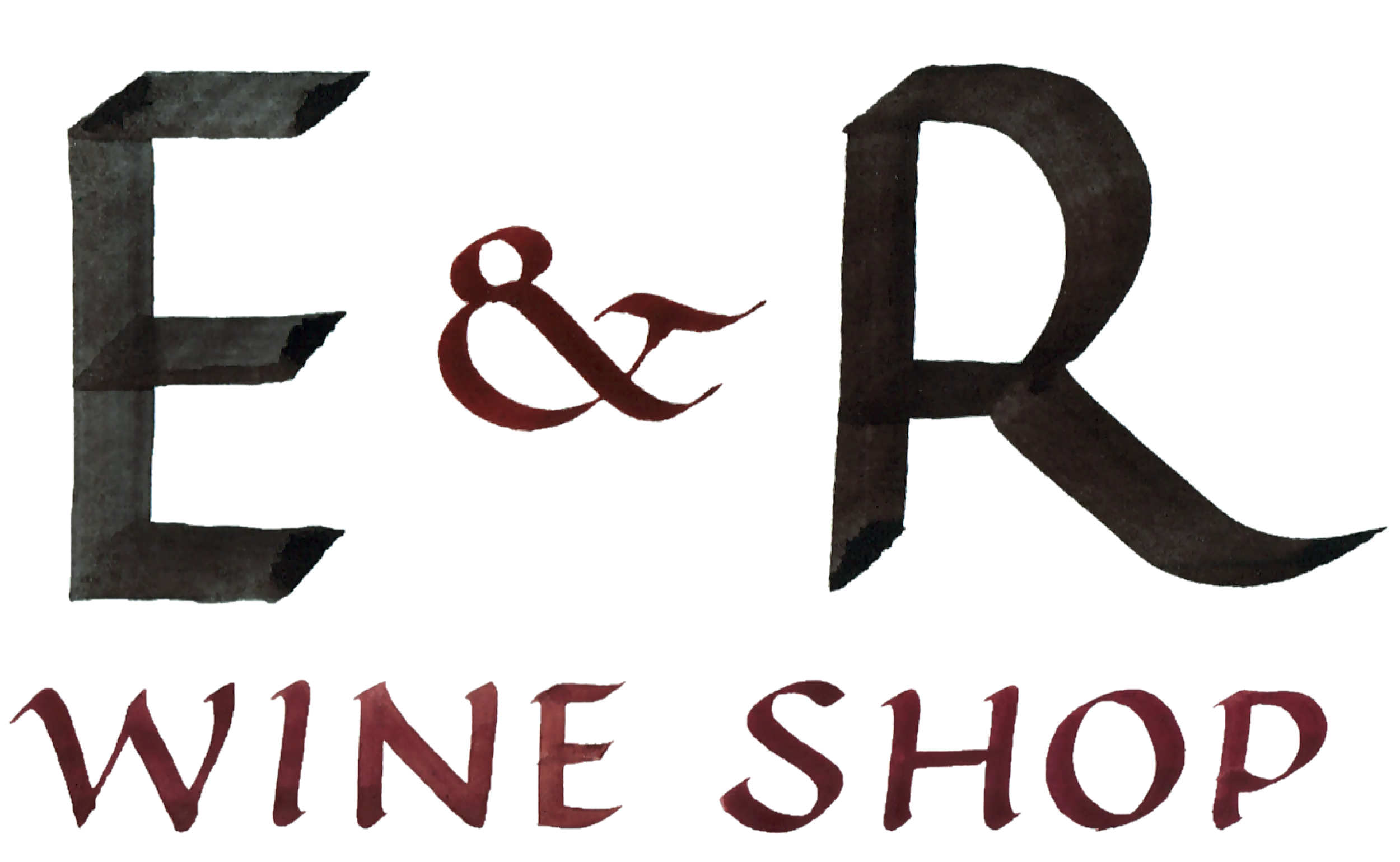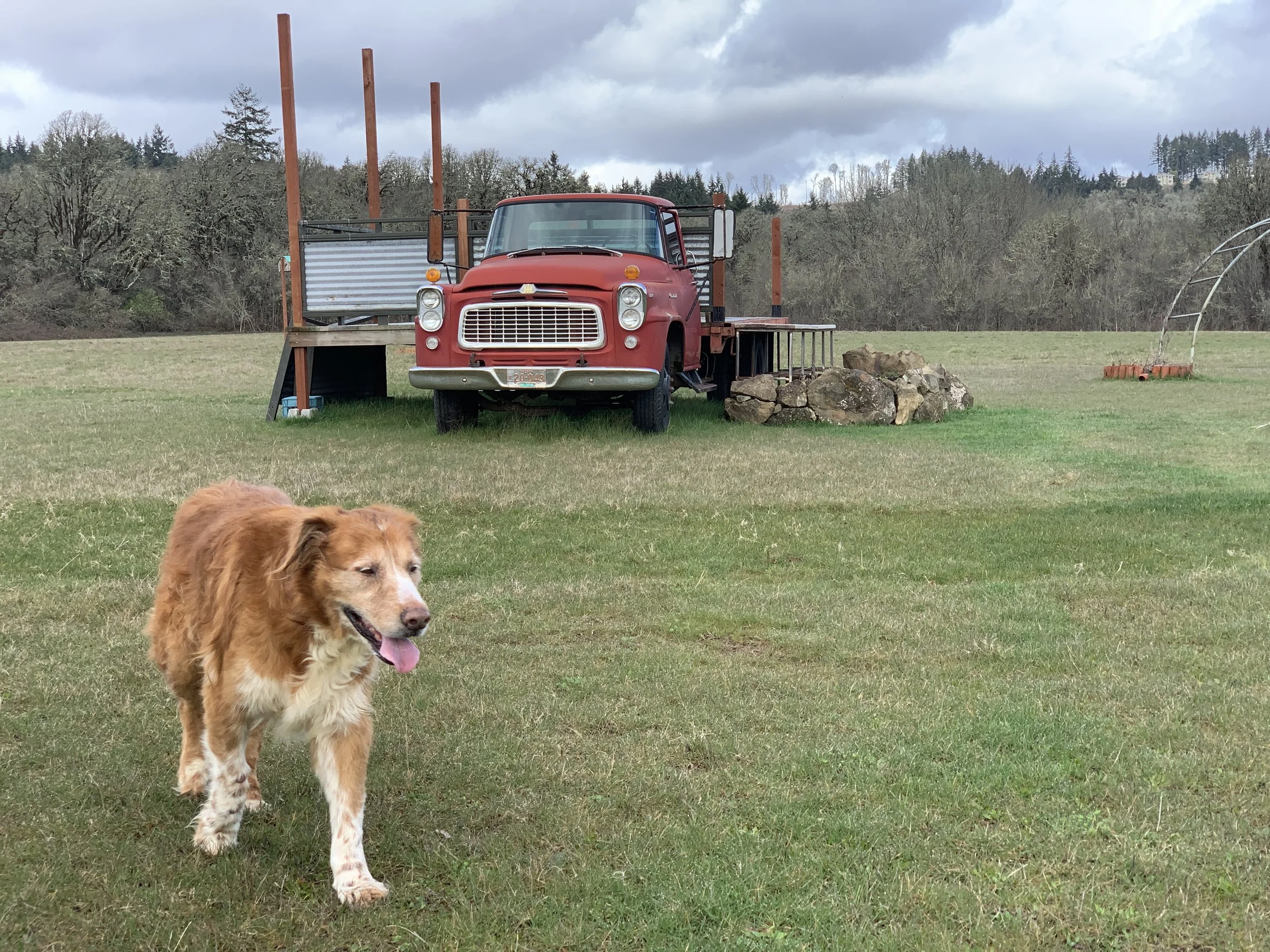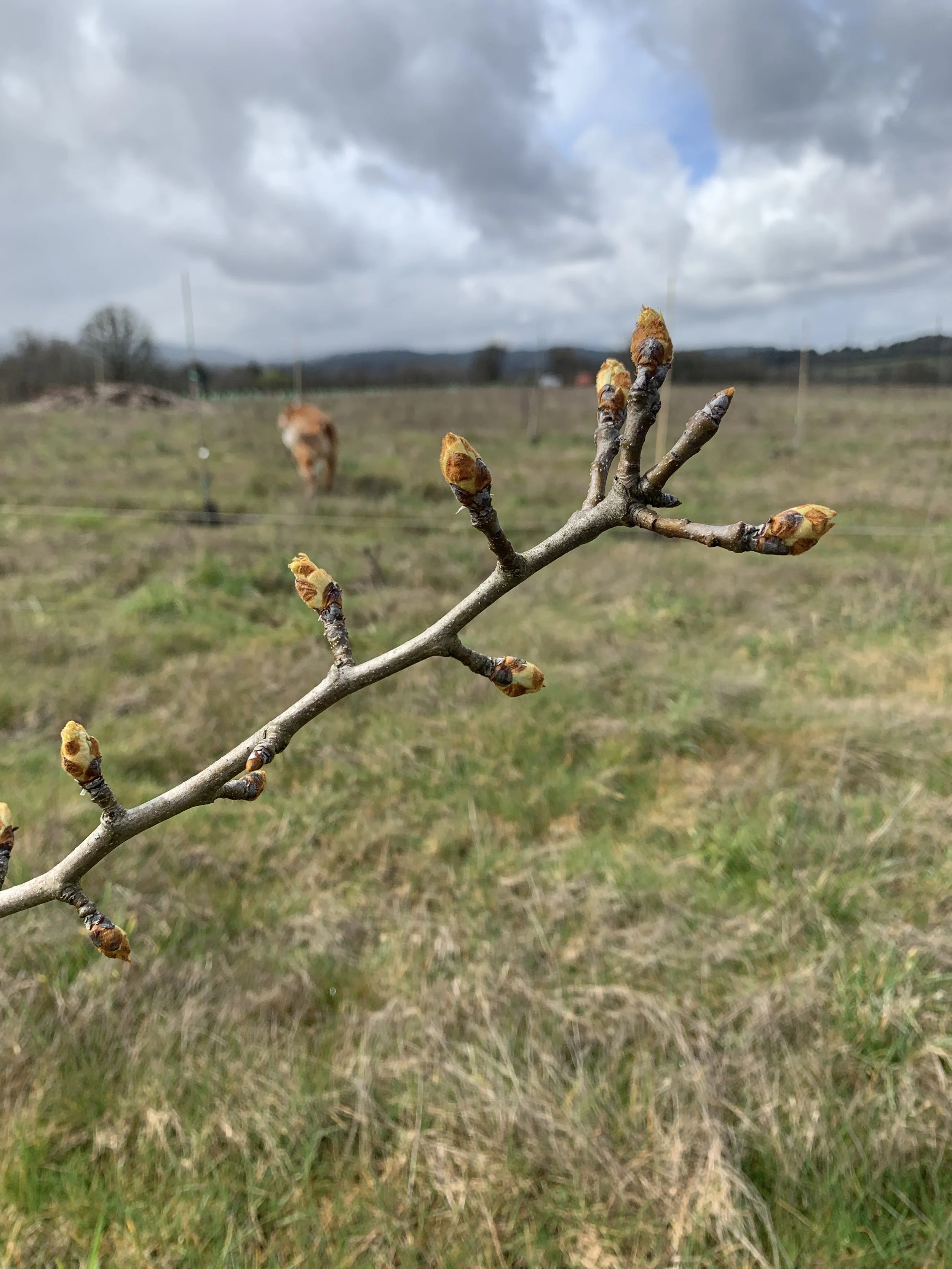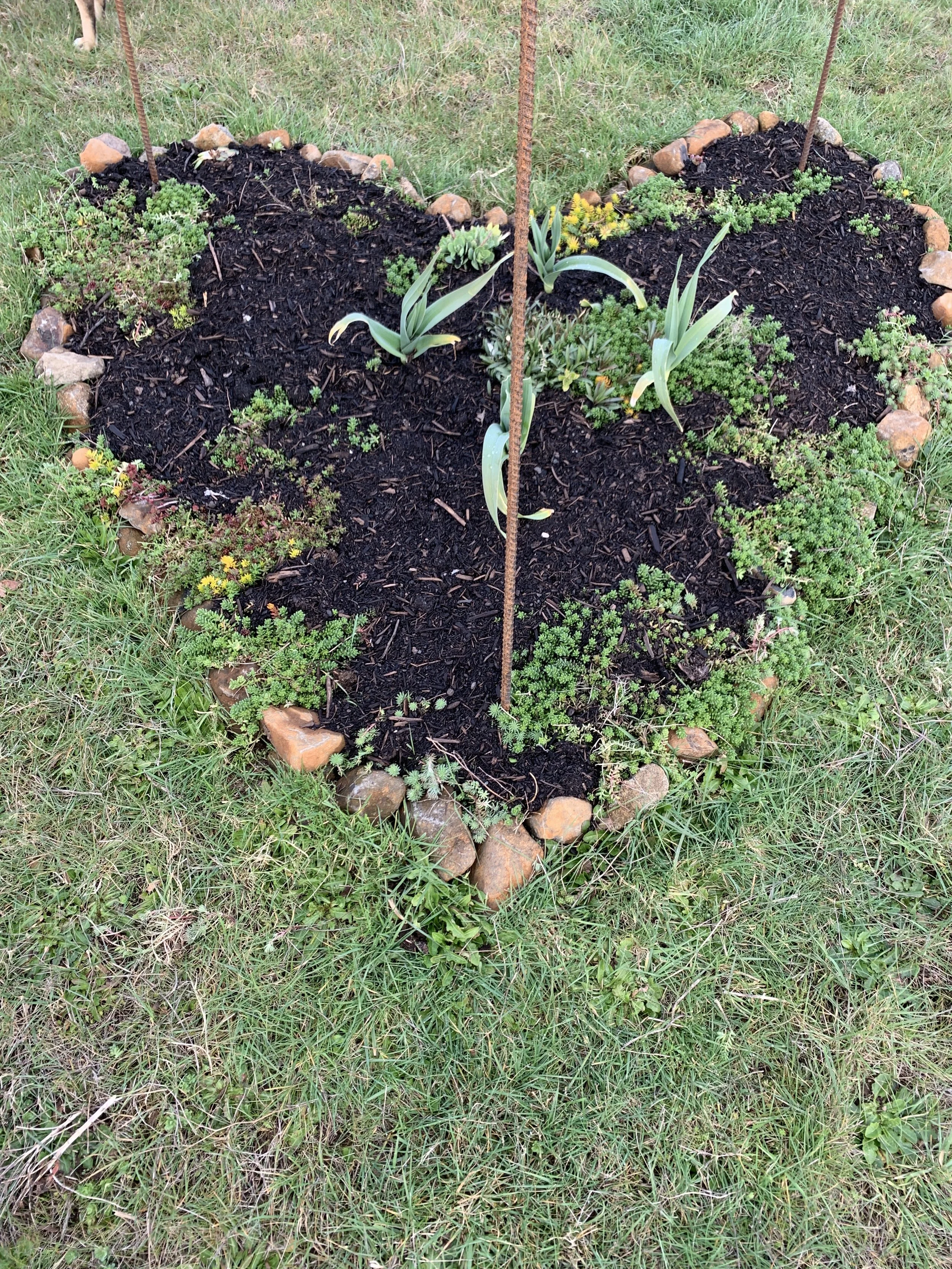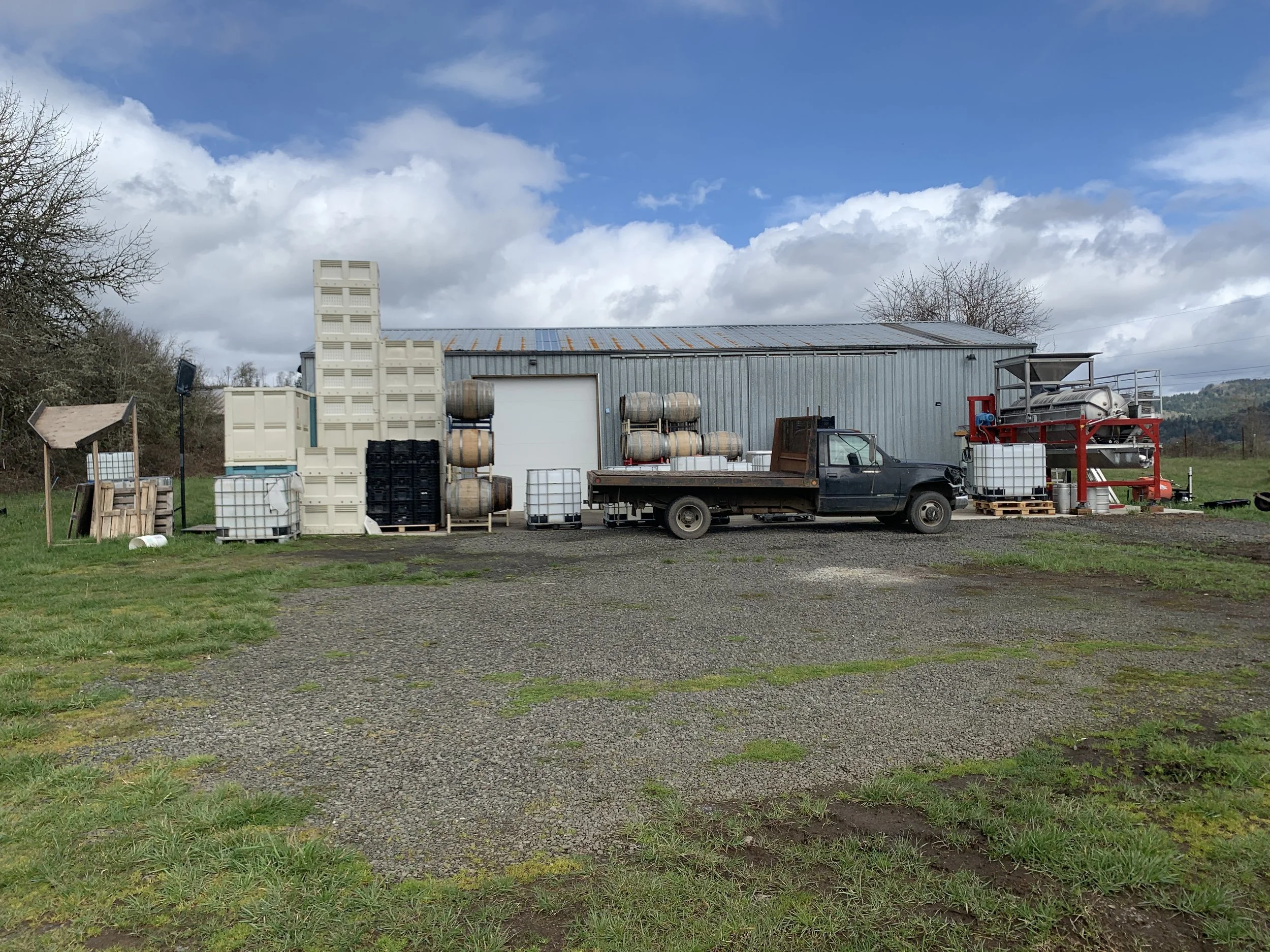Art + Science - Willamette Valley, OR
Baxter at the Roshambo ArtFarm concert venue
The secret to both art and science is observation – a keen noticing of the world and a willingness to question, experiment, interpret, and try again. Dan Rinke and Kim Hamblin have made this their life’s work.
Their laboratory and canvas is Roshambo ArtFarm, a 50 acre property they own together in the Willamette Valley’s Van Duzer corridor. When I visited them there last month, there was a palpable energy of community and creativity.
To wander in their orchard and vines, is an experience far removed from walking the manicured rows of many Oregon vineyards. It is a habitat as much as a farm, where diversity rules and Old Wisdom is engaged in a long and captivating conversation with Modern Science.
Dan Rinke and Kim Hamblin of Art + Science
Kim is an artist who made her to way to Oregon from the Midwest and Montana, ultimately settling in Sheridan to establish the first 10 acres of the ArtFarm. Dan also grew up in the Midwest but after working in restaurants and wine distribution, he moved to Fresno to study viticulture at California State University. Already versed in biodynamic farming, Dan made it the focus of his studies. After working at Domaine Alfred in San Luis Obispo and Rhys in the Santa Cruz Mountains, he became the vineyard manager and winemaker at Johan Vineyards in 2007.
The couple made their first wines under Art + Science in 2011. They began with relatively familiar expressions of Oregon – Pinot and Syrah - and have since started working with Grüner Veltliner and some of Oregon’s first Mondeuse. In seeking out examples of budget-friendly biodynamic wines to taste; however, they discovered that the best options in this category were actually ciders. They were familiar with the inspiring examples from Bordelet and Vulcain. But around the same time Dan and Kim were barreling down their first wines, they tasted an Oregon-made cider from Nick Gunn, and they realized, “Oh, this can be done here.”
In 2012, they began making cider alongside their wine. Without access to orchard fruit in the beginning, Kim began noticing fruit trees growing in ditches and along hedgerows. All good foragers know the joy of the hunt, and Kim - who has always made art from found and foraged objects - dove in whole-heartedly. She began asking landowners about abandoned, neglected orchards and what she discovered was not only a kaleidoscopic wonderland of cider varieties (and ultimately flavors) but also wonderful and long-lasting friendships with neighbors.
Spring blooms in the Art + Science orchard
When the 40 acres adjacent to Kim’s property became available for sale, Art + Science had the opportunity to expand the farm. It was a blank slate – an open field with good exposure and heavy influence from the Van Duzer winds. Coming off of 2010 and and 2011 – some of Oregon’s coolest vintages – with the understanding that theirs was a cool growing site, Dan and Kim first planted fruit trees, apples and pears, rather than vines.
In 2014, they planted 100 trees. In 2015, they learned about planting on the contour of a slope – a method for saving water, preventing erosion, and limiting compaction – and they dug up their 100 trees, replanted them on the contour and added 500 more.
Gardening = love
Now, in addition to a concert venue and an unbearably cute tiny-house turned tasting-bar (scheduled to re-open in June), they have around seventy varieties of apple trees and twenty varieties of pears, as well as head-trained Savagnin vines and other flowering plants intended specifically to encourage native pollinators. The farm is certified organic and all of their work centers on sustainability and maintaining a natural balance. “We believe in climate change,” Kim tells me. And with zero resignation, the couple is committed to building resilience by planning for the future.
They are growing cuttings taken from their favorite foraging trees, and have a seedling orchard in which they are encouraging deep tap roots and maximizing variety by growing starts from seeds left in the mash. They have built falcon perches to combat the gophers, are experimenting with irrigation trays to capture transpiration, and are actively building carbon matter and fungus under-vine with ramial wood chips. Dan notes that grapevines, as well as apple and pear trees, naturally grow in forests or along the forest edge, so they need the fungus of a woodland environment to detoxify the system, just as a human body needs a liver.
If all of this seems sensible, it is, but not much of it is ‘normal practice’ when it comes to farming winegrapes. The dominant system in Oregon – as well as many ‘new world’ wine regions - is to monocrop winegrapes in VSP (vertical shoot positioning). Dan understands well the benefits of that system but wonders if it is best suited for a changing climate. He notes that while VSP is efficient for photosynthesis, it is also efficient for transpiration, which might mean losing water faster in a hot environment. In addition, by farming different types of fruit trees and vines, the ripening season is spread out, so even if one variety suffers from a weather event, others can still produce quality fruit. Dan and Kim are using all of their combined knowledge and experience to implement a system in which diversity builds strength and their plants establish deep roots, making them less reliant on irrigation and more resilient to buffer whatever comes during a growing season.
As I walk with Dan and Kim around their property, Kim points out the swallows making their reappearance for spring, as well as signs of elk and the gardens she left un-pruned and unruly so that they could provide a habitat for insects over winter. I notice that she has planted some of her gardens in the shape of hearts, framed in by poles that serve as perches for birds. Hers is a passion literally carved into soil and reaching skyward.
the Art + Science magic laboratory
The final stop of my visit is an old horse barn that has been extensively renovated to become the Art + Science cellar. Entering, the aroma of apples and pears emanates from a cold storage room where Dan is keeping the season’s final press. Selecting a barrel, he pours a golden liquid into small Mason jars. It is spicy and warm, welcoming and nostalgic. Dan explains that it is made from the carbonic maceration of plums, and then taking my glass back after a taste, he blends the remaining plum nectar with Grüner Veltliner from another barrel. Now, a whole other kind of revelatory experience, the wine is softer and more vinous. Dan is not yet sure whether he will blend these two or bottle them separately, but this is the process. As in the field, the wines slowly unfold here to reveal themselves, and always the careful observers, the good artist and scientist will be there - paying attention.
When finally the wines are blended and bottled, they are labeled with artwork that Kim makes from cut paper. Her intricate designs and purely unique aesthetic come from cutting away tiny pieces and then layering color over color. Little details coalesce.
It seems Dan and Kim are applying the same artistic technique to the philosophy of their farm. What unsustainable inputs can be cut away? What tiny pieces can be layered on to add diversity and resilience – to make the whole ecosystem more seamless and synchronistic? Their work is science and it is art, and as they quietly innovate in the Willamette Valley, they are creating experiences that every lover of natural wine, Oregon wine, and cider must seek out.
article by Bethany Kimmel
When in stock, wines from this producer appear below. Click each wine for more detail.
